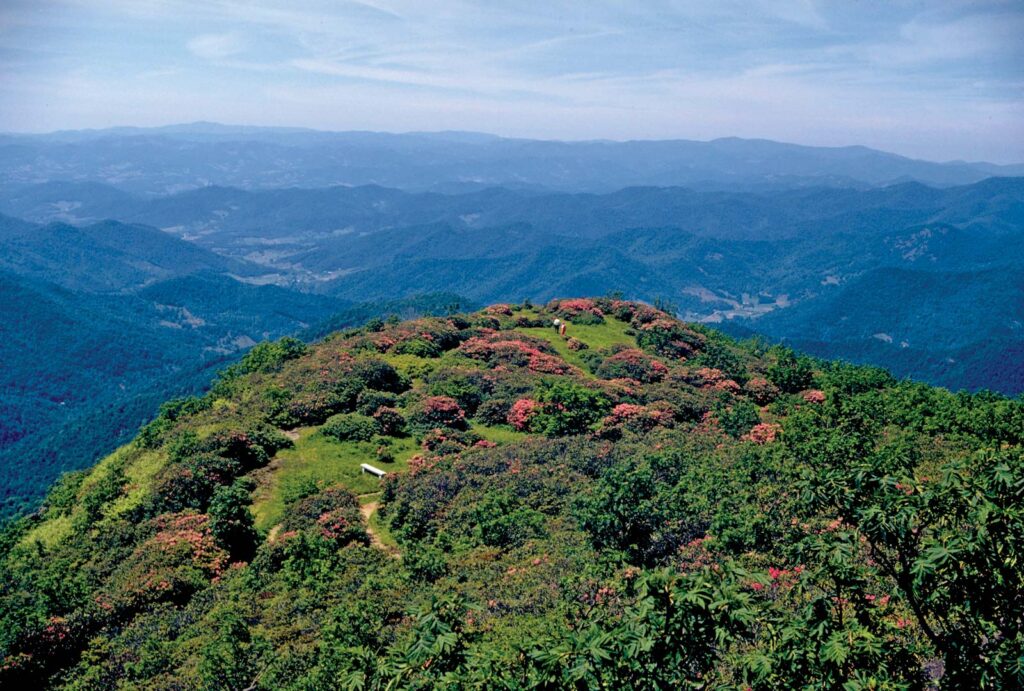Plants are the Master Chemists
 Rhododendrons in bloom on a mountaintop along the Blue Ridge Parkway, western Virginia and North Carolina. Photo from Encyclopedia Britannica.
Rhododendrons in bloom on a mountaintop along the Blue Ridge Parkway, western Virginia and North Carolina. Photo from Encyclopedia Britannica.
Unlike animals, plants cannot run and cannot hide from their predators. Instead, the defenses they have evolved include being master chemists, creating compounds which are distasteful or dangerous to the animals who would eat them. They also do hostile chemistry to hold their own against other plant species which might otherwise outcompete them for sunshine, water or nutrients. They also defend themselves from fungi, those ubiquitous decomposers which are neither plant nor animal, and which live by the chemical dismantling of the dead and often the living.
There are hundreds of known alkaloids, a broad category of nitrogen-based chemicals produced by plants, most of which are poisonous to animals. Some seeds, the next generation of plants, are especially well-endowed with protective alkaloids by their parents. For example, morning glories and avocados. When consumed in small doses, some of these toxins just slightly disrupt animal neurologic pathways, creating everything from mild euphoria and visions to wild hallucinations and cardiac arrest. For humans wishing to escape reality, these symptoms can be addictive. For most wild animals, departing reality can become fatal rather quickly. A bumbling songbird is an easy target for a hawk, and a loopy deer doesn’t notice the mountain lion soon enough. Similarly, an automobile driver on a high sometimes doesn’t make it home.
The process of plants defending themselves chemically from other plants is called alleleopathy, and this warfare is conducted mostly in the soil via root exudates. A tricky business it is because many species of trees and shrubs also release sugars from their roots to feed symbiotic fungi living around their roots (mycorrhizal fungi), which in return act as root extensions that gather nutrients and moisture for the trees and shrubs, or are manufactured by the fungi themselves. So the plants are trying to poison some competitors and at the same time, supporting their cooperators.
One noticeable example of where this cooperate-and-kill chemistry dominates the landscape is in the southern Appalachians where some hillsides are completely covered with large groves of rhododendrons. They are so attractive that we forget to inquire why there are no oaks and pines. The reason is because the rhododendrons chemically kill the mychorrizal fungi that the trees need to flourish in these shallow, acid impoverished soils, and they chemically support their own soil fungi, which help them gather their necessary nutrients.
We have evolved to depend on, and be part of, plant chemistry. For example, tropical environments are ideal for many species of aggressive bacteria and fungi to thrive by breaking down organics, and plants protect themselves, including their fruits, chemically. As warm-blooded mammals, which are always warm and moist inside, we maintain a very delicate warfare inside to keep our “good” gut microbes outnumbering and outcompeting the “bad” guys. Part of winning this ongoing warfare is a regular supply of plant-based acids, for example, citric acid from oranges, malic acid from apples, cinnamic acid from cinnamon, etc.
Do not think that a tree is just sitting there in the woods, taking abuse from its environment. If it has resided there for 50 years, it has been a successful chemical factory, finding a balance between chemical aggression and chemical support systems. And we, in fact, carry on some of the same kind of warfare/cooperation in our tropical guts, with the aid of plant chemistry.
Last week we considered the role of one toxic plant, white snakeroot, over the last two centuries. Next week, let’s look at one plant chemical and its role in our lives today.


